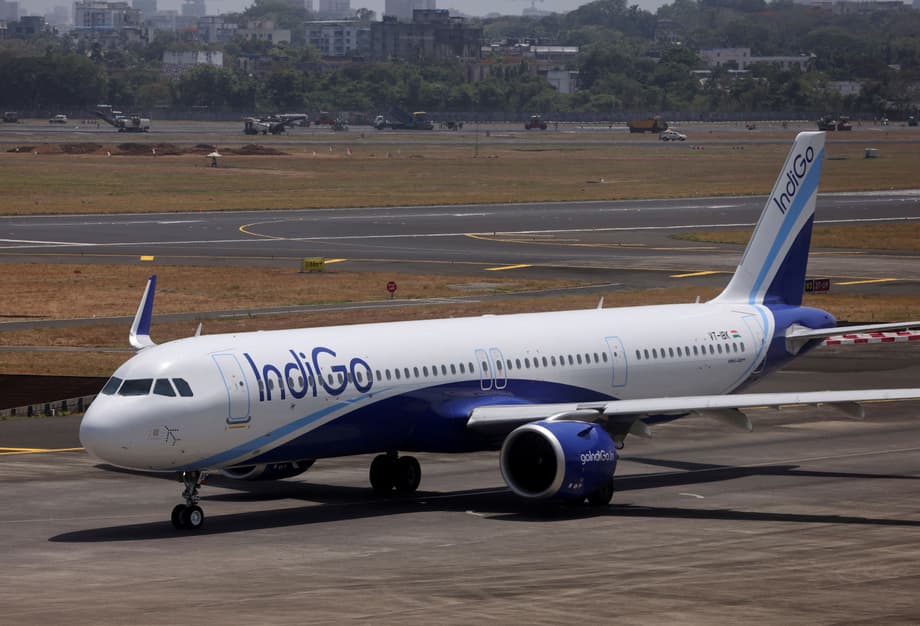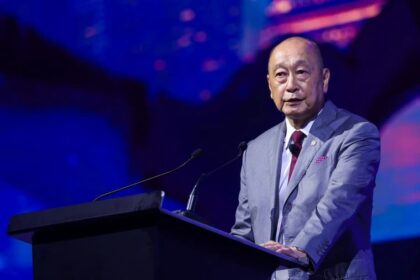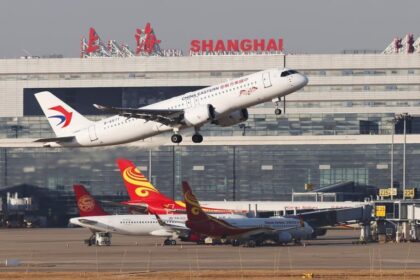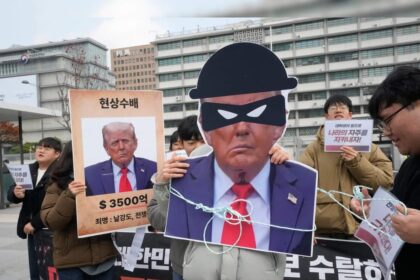A reopening that signals a shift
India and China have restored direct commercial air links for the first time in five years. On Sunday night, IndiGo flight 6E 1703 lifted off from Kolkata and touched down in Guangzhou roughly three and a half hours later, carrying 176 passengers. The route had been dormant since early 2020, first because of the Covid pandemic and later because of a deadly confrontation on the disputed Himalayan frontier. The restart is a visible signal that the relationship between the two most populous countries is moving into a steadier phase, with leaders on both sides betting that easier travel can help steady trade, education, and diplomacy.
Beijing and New Delhi have been working to lower the temperature. They reached a border disengagement understanding last year, restarted high level dialogue, and set up mechanisms to manage incidents along the Line of Actual Control. The return of nonstop flights is the first practical outcome that most citizens will feel. It shortens trips that for years routed through hubs such as Singapore, Bangkok, or Hong Kong, saving money and many hours for business travelers, students, and families.
More routes are set to follow. China Eastern will reconnect Shanghai with Delhi beginning November 9 with three flights a week. IndiGo plans to add New Delhi to Guangzhou on November 10. Regular services already link Indian cities with Hong Kong. Before the suspension, the two sides operated about 2,588 scheduled flights in 2019 across the year, which averaged around seven one way flights a day. Officials and airlines say the new phase will build gradually.
Yu Jing, the spokesperson for the Chinese Embassy in India, welcomed the resumption in a post on X, underscoring the practical value of restoring simple point to point connections after a long gap.
“Direct flights between China and India are now a reality.”
Why flights stopped and what changed
Direct services ended in early 2020 when both countries closed borders to contain the spread of Covid. Tensions then spiked after a deadly clash on the high mountain frontier later that year. At least 20 Indian soldiers and four Chinese soldiers died in the fighting, and the two sides rushed troops, armor, and artillery to remote positions. New Delhi also tightened scrutiny of Chinese investment and banned hundreds of mobile apps. Trust eroded, which kept the air corridor shut even after most international routes were back.
Talks never fully stopped, and they accelerated over the past year. Prime Minister Narendra Modi met President Xi Jinping on the sidelines of multilateral summits, and senior officials held rounds of discussions on de-escalation and boundary affairs. The two governments announced steps for military disengagement at select friction points and revived working groups to prevent miscalculation. India restarted issuing visas for Chinese tourists in July, a sign that people to people exchanges were on the mend.
From standoff to stepwise de-escalation
Negotiators have focused on reducing the risk of fresh incidents, keeping dialogue open, and broadening cooperation where possible. Recent meetings in New Delhi addressed troop pullbacks, protocols along the frontier, and the process for delimiting portions of the boundary. The sides moved to reopen border trade at designated points and to coordinate on cross border rivers. Beijing agreed to share emergency hydrological data on the Yarlung Zangbo (Brahmaputra in India and Bangladesh). The resumption of air links fits into that wider effort to slowly restore normal channels.
Routes, schedules, and the passenger experience
The first restored service runs Kolkata to Guangzhou on IndiGo’s Airbus A320neo aircraft. The inaugural flight left Kolkata close to 10 p.m. local time and landed in southern China early Monday morning. On the return leg, the aircraft departed Guangzhou shortly after dawn and arrived in Kolkata before breakfast, a timetable designed to link with domestic banks of connections in both countries. IndiGo says it will keep growing direct links between major Indian and Chinese cities as clearances and demand permit.
- Kolkata to Guangzhou: daily nonstop service by IndiGo on A320neo aircraft, flight time about three and a half to four hours (flight 6E 1703 outbound, 6E 1704 return).
- New Delhi to Shanghai: China Eastern to operate three times a week from November 9 (Wednesdays, Saturdays, Sundays), with onward connections across China.
- New Delhi to Guangzhou: IndiGo scheduled to begin on November 10, with frequency expected to scale as approvals and demand grow.
- Many travelers who relied on Singapore, Bangkok, or Hong Kong as transfer points can now fly point to point, cutting time and cost.
At Netaji Subhas Chandra Bose International Airport in Kolkata, airline staff lit brass oil lamps to mark the moment as passengers checked in. The scene reflected the practical impact of the restart, especially for travelers who have spent years piecing together multi leg itineraries to reach factories, trade fairs, or classrooms.
Trade and business impact
The renewed air bridge matters most to commerce. Kolkata’s textile, leather, and jute exporters rely on suppliers and buyers in Guangdong, one of China’s manufacturing powerhouses. Direct lift cuts transit times for samples and spares, simplifies after sales support, and makes it easier to bring buyers to showrooms and factories. For Indian micro, small, and medium enterprises, the ability to get teams to Guangzhou in a single hop can be the difference between winning an order and losing out to a competitor.
Krishna Goyal, a Kolkata based businessman who boarded the first flight, reflected on the change for frequent travelers who chase deals across Asia.
“Earlier, we had to change two or three flights.”
IndiGo’s chief executive Pieter Elbers framed the move as good for commerce and travel, and signaled that more city pairs are on the drawing board.
“We are excited to be the first Indian carrier to resume our daily nonstop flights between Kolkata and Guangzhou, reinstating one of the most important air links between India and China. This strategic move will enhance bilateral ties, support MSMEs, and boost tourism, education, and healthcare in both countries.”
Chinese firms working in India also view the route as a practical improvement. A traveler employed by an industrial equipment maker described how direct trips help engineers and managers cycle quickly between plants, suppliers, and customer sites, avoiding long detours and missed connections. Business groups in Kolkata say faster travel will support trade fairs and buyer delegations in both directions.
Cross border trade remains large and complex. Chinese officials say India’s exports to China rose strongly in the first half of the current fiscal year, and Chinese exports to India have also increased this year. With direct flights back, executives will have an easier time checking factories, negotiating contracts face to face, and moving skilled staff to support projects. For sectors that rely on just in time delivery of high value components, hours saved in transit can help keep production lines moving.
The diplomatic calculus
The thaw in air travel comes as both capitals manage a tough external environment. Washington has threatened steep tariffs on a broad range of imports. India is trying to preserve access to the United States while pursuing its own industrial goals. China faces ongoing friction over trade and technology. A meeting between President Xi Jinping and President Donald Trump is planned to address their trade dispute. Both Beijing and New Delhi have an interest in not letting that fight swallow their own agendas.
Leaders have also kept channels open in other forums. Modi visited China in August for the first time in seven years and met Xi on the sidelines of the Shanghai Cooperation Organisation summit. Chinese Foreign Minister Wang Yi traveled to New Delhi for boundary talks and consultations on trade and visas. Symbolic gestures have accompanied the diplomacy. Soldiers exchanged sweets at the border during Diwali, a scene that would have felt unlikely in the immediate aftermath of the 2020 clash.
India has balanced renewed engagement with continued caution. It still screens many Chinese investments and has kept app bans in place. At the same time, New Delhi has tightened its work with the Quadrilateral Security Dialogue (Quad) alongside Japan, Australia, and the United States. The decision to bring back direct flights fits a pragmatic approach, keeping communication lines open while hedging on security.
Security, visas, and constraints that remain
The frontier is still tense. Troops remain deployed at altitude, and the Line of Actual Control is not demarcated in several stretches. That makes confidence building measures essential. Recent rounds of talks have focused on disengagement at friction points, better signaling on patrols, and protocols to avoid incidents. Officials also discussed the Yarlung Zangbo (Brahmaputra) and agreed to share emergency hydrological data, which matters during the monsoon season and when dam construction raises concern downstream.
Visas are another area where travelers seek smoother processes. Business groups in both countries have asked for faster approvals, multiple entry permits, and transparent criteria for visits. India resumed tourist visas for Chinese citizens in July and says it aims to facilitate travel for legitimate business and study. Chinese consular officials have called for more facilitation for their travelers to India. Airlines on both sides will calibrate capacity to visa issuance and demand.
Voices from the tarmac
At Kolkata airport, senior officials watched as IndiGo reopened the air link. The director of the airport, Dr. Pravat Ranjan Beuria, praised the moment and said more routes should follow as demand builds.
“It is very encouraging and a great moment that IndiGo has resumed a direct flight from NSCBI airport to China’s Guangzhou and we are expecting more direct routes with other Chinese cities.”
Qin Yong, deputy consul general of China in Kolkata, framed the day as a positive step for ties and set out a wider vision for connectivity.
“The initial aim is to connect Beijing, Shanghai, Guangzhou, and Shenzhen with Delhi and Kolkata. We wish to build a sincere and closer partnership with India so that trade and commerce between the two countries grow stronger.”
Passengers noticed the difference immediately. With the detours gone, journey times have come back to what they were before the pandemic.
“The time taken to reach China will now reduce,” said one traveler in the arrival hall, echoing the relief of many on the inaugural flight.
What it means for students and tourism
Students and families stand to gain from the return of direct flights. Indian students who attend medical and language programs across China can now fly with fewer transfers, which reduces cost and travel stress. Chinese students returning to Indian campuses benefit from the same convenience. Tourism operators in both countries report early interest in city breaks tied to the new links, and in longer journeys that pair multiple destinations. Pilgrimage travel also shows signs of recovery. Beijing has allowed Indian pilgrims to visit Mount Kailash in Tibet again, reviving a route that was closed after the 2020 clash.
Capacity will build step by step. Airlines generally grow new routes with modest schedules at first, test demand across seasons, then add frequencies and city pairs that match traffic. Success will depend on predictable rules, streamlined visas, and a security climate that allows people to plan months ahead. For now, the sight of a direct Kolkata to Guangzhou departure board is itself a change that many on both sides have waited to see.
Key Points
- IndiGo restarted direct India China flights with Kolkata to Guangzhou, carrying 176 passengers after a five year pause.
- China Eastern plans Shanghai to Delhi flights from November 9, and IndiGo will add Delhi to Guangzhou on November 10.
- Flights were halted in 2020 because of Covid and stayed suspended after a deadly border clash that killed soldiers on both sides.
- Recent steps include border disengagement talks, revived high level dialogue, and the restart of visas for Chinese tourists.
- Direct routes cut time and cost for trade, study, and tourism, reconnecting Kolkata’s exporters with Guangdong’s markets.
- Business groups expect more city pairs to open as demand, security, and visa processing improve.
- Both countries are navigating US tariff pressure and wider geopolitical strains while keeping practical cooperation alive.
- Airlines intend to scale capacity gradually, with daily Kolkata to Guangzhou and tri weekly Shanghai to Delhi as early anchors.












